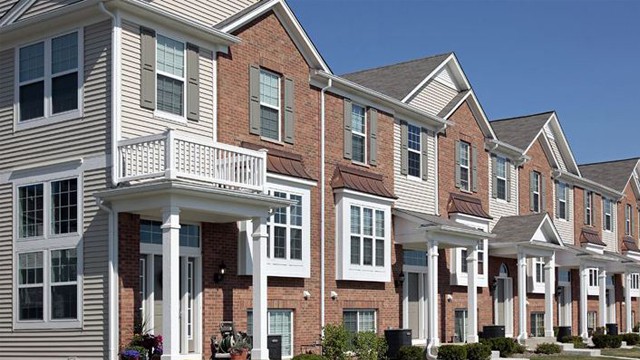Does Mississauga Need More Townhouses?
Published September 26, 2016 at 9:41 pm

When I was growing up in Mississauga, my family and I mainly used our car to get around. I took public transit during my middle school years, but I relied heavily on walking and the family car. To me, a car was a necessity. My situation isn’t unique in a city designed and built as though cars–not people–are the primary occupants.
I don’t think there is any disagreement that the era of a sprawling Mississauga is effectively over. The greenfield development is complete, infill development is in and there’s demand for more housing to keep pace with the growing population. I watched this video, made by an out of town observer, and his takeaway is that Mississauga seems to be building big buildings but not really building an actual city. I don’t agree with all his points, but there must be a better way to increase density without having more high rise condominiums. I think that causes an imbalance between those kinds of buildings and the traditional detached home subdivisions.
At Mississauga’s Planning and Development Committee (PDC) on September 19, there was a proposal to approve more of what is technically termed Horizontal Multiple Dwellings (HMDs) — also known as stacked townhouses, back-to-back townhouses, garden flats or walk-up apartments. You can read the section report from PDC here.
Some advantages of adopting HMDs:
-
Achieves goal of density through a low rise form of housing, not just relying on mid to high-rise condominiums.
-
A sensitive way to transition from low density to high density built forms (all this terminology might sound very wonkish, but it’s planner speak, so bear with me).
-
Diversity in housing choices (having this third option is a good way to provide market choices between high-rise condos and detached houses; the latter of which will become more rare as time goes on because for many people, detached housing is no longer an option).
-
Less expensive construction methods and reduced maintenance fees, aka a form of affordable housing (though I’m not sure if maintaining a low cost for the builders is a factor in affordable housing).
-
Grade related housing, i.e. front door directly to the outside (because sometimes living in a condo could be depressing if you open your door to grey hallways all the time?).
-
Profitable for the development industry (which matters to probably just 1 per cent of people out there, so it’s not really an advantage for anybody else)
But it’s not all good to the degrees that were presented. The planners presented a number of challenges that HMDs face:
-
Exposed parking structure resulting in excessive staircases (it would be quite hazardous for people to climb them during the winter months and they’re not ideal for people with mobility challenges).
-
Below grade units could result in lack of sunlight, fresh air and usable private amenity space (same issues with living in a condo).
-
Waste collection issues: a number of HMDs are being proposed to be right next to dwelling units in very visible locations (I doubt many people would like having to see and smell garbage so close to them every day).
-
Property management: usually they’re full time, but the HMDs are being financed by developers with savings in mind, hence they may only provide part-time property management services.
More frequent building of medium density homes is already happening here in Mississauga. For example, I am a frequent user of One Health Club along North Service Road over the summer and they’ve redeveloped some residential areas for townhouse complexes. There are many other examples spotted around Mississauga. This kind of housing could become a more suitable alternative for a Mississauga on it’s way to becoming more of a densified municipality that could house more people without resorting to highrises all the time.
Here is the video link to the entire PDC meeting from September 19, 2016.
Follow me on Twitter at @thekantastic
insauga's Editorial Standards and Policies advertising





